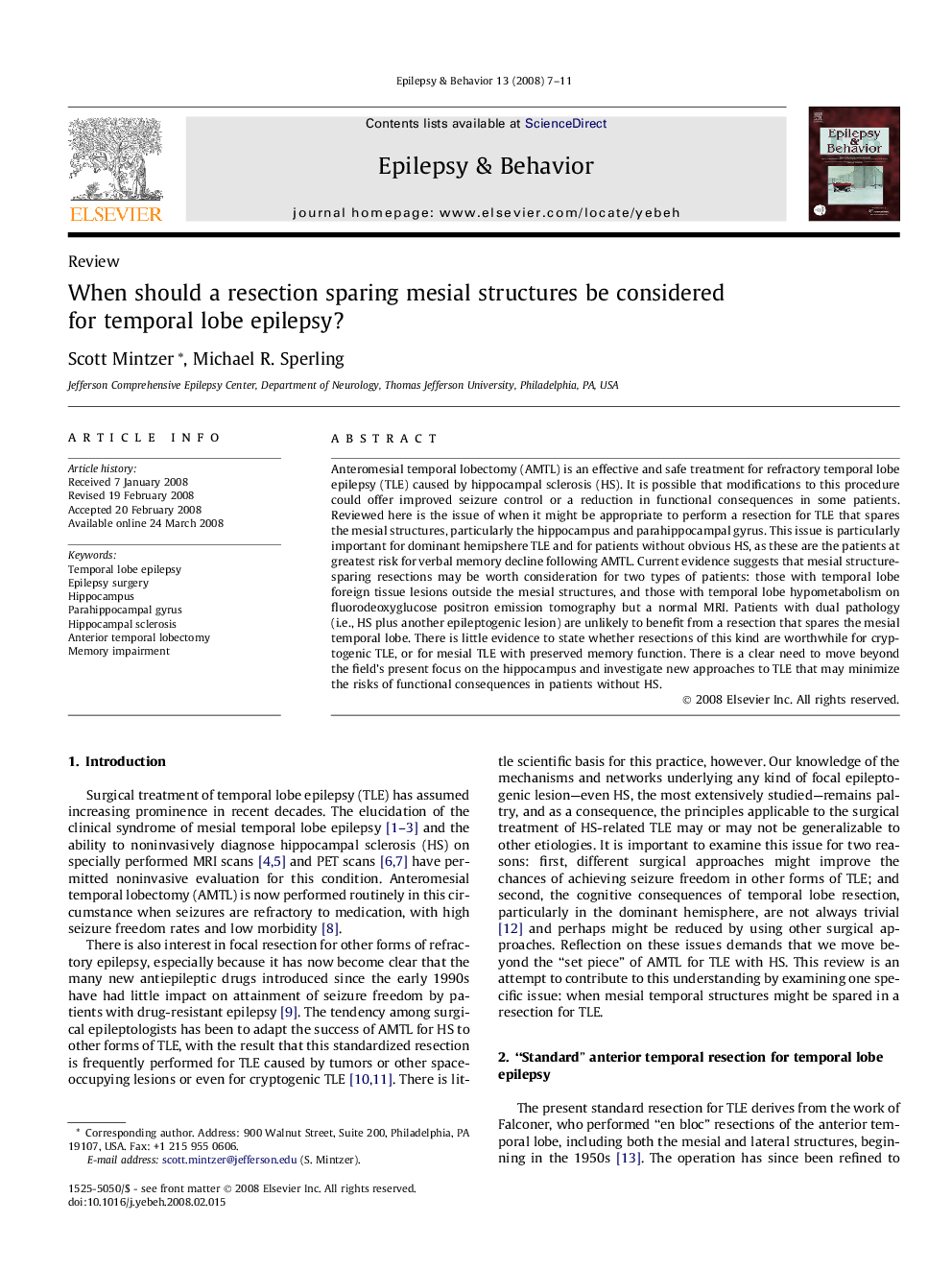| Article ID | Journal | Published Year | Pages | File Type |
|---|---|---|---|---|
| 3050929 | Epilepsy & Behavior | 2008 | 5 Pages |
Anteromesial temporal lobectomy (AMTL) is an effective and safe treatment for refractory temporal lobe epilepsy (TLE) caused by hippocampal sclerosis (HS). It is possible that modifications to this procedure could offer improved seizure control or a reduction in functional consequences in some patients. Reviewed here is the issue of when it might be appropriate to perform a resection for TLE that spares the mesial structures, particularly the hippocampus and parahippocampal gyrus. This issue is particularly important for dominant hemipshere TLE and for patients without obvious HS, as these are the patients at greatest risk for verbal memory decline following AMTL. Current evidence suggests that mesial structure-sparing resections may be worth consideration for two types of patients: those with temporal lobe foreign tissue lesions outside the mesial structures, and those with temporal lobe hypometabolism on fluorodeoxyglucose positron emission tomography but a normal MRI. Patients with dual pathology (i.e., HS plus another epileptogenic lesion) are unlikely to benefit from a resection that spares the mesial temporal lobe. There is little evidence to state whether resections of this kind are worthwhile for cryptogenic TLE, or for mesial TLE with preserved memory function. There is a clear need to move beyond the field’s present focus on the hippocampus and investigate new approaches to TLE that may minimize the risks of functional consequences in patients without HS.
